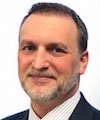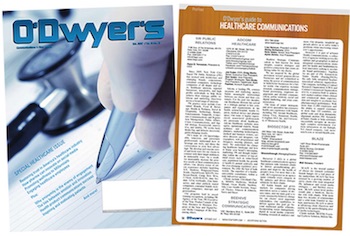|
|
I couldn’t hide my excitement as we pulled up to NASA’s Kennedy Space Center in Cape Canaveral, Florida, last month. On a family vacation to Orlando, I insisted that we make the 45-minute drive to the famous NASA landmark. Always a bit of a space nerd, I beamed as we entered the gates.
My childhood was filled with grainy black-and-white memories of rockets, brave astronauts and amazing images of space. But here they were, in living color. Brought to life. Especially interesting to me was the exhibit on the Apollo space program, the one that put us on the Moon. We saw the engineering feats, made possible by brilliant scientist who had no roadmap, that marked our nation’s yearning to explore, to innovate, to discover.
|
|
The history of discovery and exploration was never more alive than in those heady days in the 1960s, when President Kennedy set an audacious goal: Putting an American on the Moon within nine years. Keep in mind, when Kennedy made this pronouncement, NASA had only just mastered getting an astronaut safely into space. Kennedy’s reason for setting this goal was even more bold, as he outlined in his famous 1961 speech.
“We choose to go to the Moon,” the President said. “We choose to go to the Moon in this decade and do the other things, not because they are easy, but because they are hard.”
The spirit of innovation, a dedication to discovery — something that’s hard — drove NASA to accomplish that goal. A country cheered. National pride soared. And the world took notice.
But, during a bus tour of the launch pads throughout Cape Canaveral, my mood changed. My excitement turned to sadness. You see, the launch pads were in disrepair. They’re barely used anymore. Skeletons of NASA’s past glory. The only use of a few of the pads now is from private space companies, whose goals appear to be space tourism and supply missions to the International Space Station. No more shuttles. No more manned missions.
So much for discovery. Never mind, exploration.
Then it occurred to me. There still is discovery, exploration and scientific audacity in the United States. Don’t look to outer space. Think inner space.
The United States leads the world in drug, device and medical discovery. We’ve achieved more in a short period of time than any other nation, and more than anyone ever imaged. Diseases eradicated. Quality of life improved. Lives saved. Apart from the tech industry, medical science is now our last bastion of discovery. This includes Immunooncology; a cure for Hep C; HPV and other critical vaccines; treatments for rare diseases; advancements in cardiac care, cancer, neurology; innovations in provider/hospital care delivery; and on and on.
And yet, it’s under attack. From the threat of deep cuts to National Institutes of Health funding, the nation’s seat of basic science that powers medical science, to policies that could make it more difficult or even impossible to access medicines and healthcare. If we’re not careful, medical discovery and exploration may very well suffer the fate of those rusted out launch pads. A monument to a more inspired time.
Medicine is a tricky issue in the U.S. right now. There are certainly some topics worthy of thoughtful debate, such as drug access, pricing, the Affordable Care Act and possible replacement, and regulatory burdens. And patients and advocacy groups must have a seat at the table as we search for answers. But we can’t let these issues stop discovery and exploration. We need to keep innovating. Not because it’s easy, but because it’s hard.
We must continue to fund programs that can make a difference. The Cancer Moonshot initiative is one. Aptly named after Kennedy’s audacious goal, Cancer Moonshot seeks to accelerate cancer research to make more therapies available to more patients. It’s funded for a number of years, but do we have the will to continue? Will a commitment to discovery and audacity be lasting? I hope so.
As a health public relations and patient advocacy professional, I view communicating about science as my life’s mission. I’ve dedicated myself to ensuring patients’ voices are heard. I will not relent and encourage anyone who loves science and patient care to join me in my mission to tell the story of healthcare exploration and discovery.
Back at the Kennedy Space Center, as the sun was low in the sky and we were about to leave, we ducked into an exhibit about the Orion project, NASA’s dream of a manned mission to Mars. It’s decades away, if not longer, and is really only an idea at this point. Who knows if we’ll ever muster the vision and resolve — let alone dedicate the funding — to achieve such a feat. We watched a video spelling out NASA’s plans. Toward the end, it explained that there are many things they have yet to figure out about how they can get to Mars and back. The video then asked the youngsters in the audience to help them find answers by becoming scientists.
What if the person who holds the key to unlocking these answers is unable to fulfill their potential because of illness? Medicine matters. Health drives everything we are. It allows us to achieve our life’s potential. We need to dedicate ourselves to discovery, and continue to lead the world. It should elicit wonder and national pride.
Because medicine can give life to the next generation of scientists, researchers, medical professionals, and, yes, explorers.
***
Michael O’Brien is Managing Director of JPA Health Communications.

 Michael O'Brien
Michael O'Brien

 Finn Partners has recruited cardiologist and noted patient care advocate Richard Levin as chief health affairs counselor, a newly created position.
Finn Partners has recruited cardiologist and noted patient care advocate Richard Levin as chief health affairs counselor, a newly created position. Lo Isidro, senior director at Real Chemistry with more than a decade of strategic communications and PA experience, has joined Narrative Strategies.
Lo Isidro, senior director at Real Chemistry with more than a decade of strategic communications and PA experience, has joined Narrative Strategies. Nelson Fernandez, former North American chair of APCO Worldwide and managing director of Burson-Marsteller, has joined Volunteers in Medicine Berkshires as director of communications and PA.
Nelson Fernandez, former North American chair of APCO Worldwide and managing director of Burson-Marsteller, has joined Volunteers in Medicine Berkshires as director of communications and PA. Lilit Bargar, who was most recently an EVP in the healthcare practice at Weber Shandwick, comes on board at GCI Health as EVP, corporate practice lead.
Lilit Bargar, who was most recently an EVP in the healthcare practice at Weber Shandwick, comes on board at GCI Health as EVP, corporate practice lead.



 Have a comment? Send it to
Have a comment? Send it to 
No comments have been submitted for this story yet.